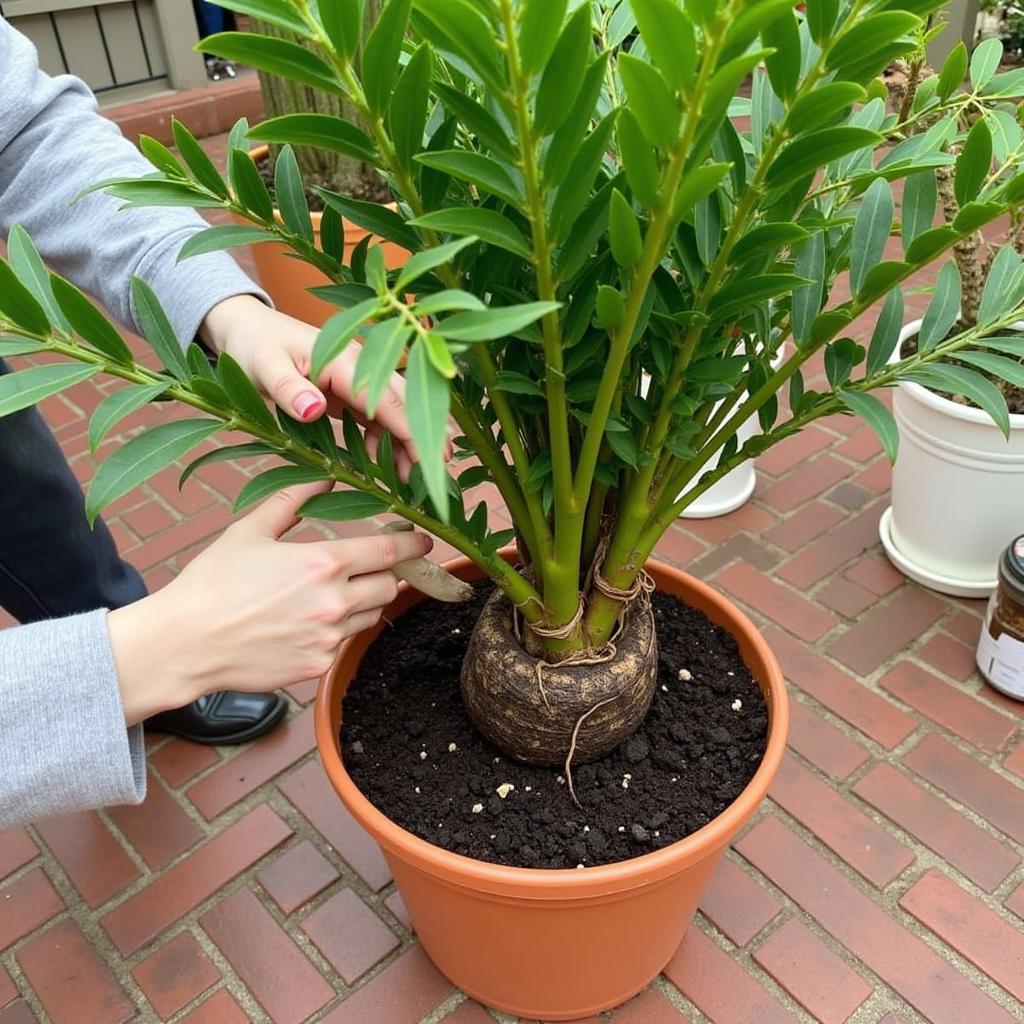Parlor palms are a popular choice for indoor plant enthusiasts, known for their elegant fronds and air-purifying qualities. This guide provides everything you need to know about parlor palm care, from watering and lighting to troubleshooting common problems.
Understanding Your Parlor Palm
Parlor palms (Chamaedorea elegans) are native to the rainforests of Southern Mexico and Guatemala. These slow-growing palms thrive in humid environments with indirect light, making them well-suited for indoor living. Their compact size and tolerance for low light make them an ideal addition to homes, offices, and even dimly lit corners.
Providing the Ideal Light for Your Parlor Palm
Parlor palms prefer bright, indirect light. Avoid placing them in direct sunlight, which can scorch their delicate fronds. A north-facing window is usually a good choice, or an east- or west-facing window with sheer curtains to filter the light. If your parlor palm isn’t getting enough light, it may start to stretch and become leggy.
 Parlor Palm in Indirect Light
Parlor Palm in Indirect Light
Too little light can also lead to slow growth. On the other hand, too much direct sunlight can cause the leaves to turn yellow or brown.
Watering Your Parlor Palm
Proper watering is crucial for parlor palm care. These plants prefer consistently moist soil, but they don’t like to sit in water. Allow the top inch or two of soil to dry out between waterings. Overwatering can lead to root rot, a common problem that can be fatal to parlor palms. Underwatering, on the other hand, can cause the fronds to droop and turn brown at the tips.
 Watering a Parlor Palm
Watering a Parlor Palm
Maintaining the Right Humidity
Parlor palms thrive in humid environments. You can increase humidity around your plant by grouping it with other plants, placing it on a pebble tray filled with water, or using a humidifier. Misting the fronds occasionally can also help. During dry winter months, paying extra attention to humidity is essential for healthy parlor palm care.
Fertilizing Your Parlor Palm
Feed your parlor palm with a balanced liquid fertilizer diluted to half strength once or twice during the growing season (spring and summer). Avoid fertilizing during the dormant period (fall and winter).
Repotting Your Parlor Palm
Parlor palms are slow growers and don’t need to be repotted frequently. Repotting every two to three years, or when the roots become pot-bound, is usually sufficient. Choose a pot that is slightly larger than the previous one and use a well-draining potting mix.
 Repotting a Parlor Palm
Repotting a Parlor Palm
Troubleshooting Common Parlor Palm Problems
- Brown tips on fronds: This can be caused by underwatering, low humidity, or too much fertilizer.
- Yellowing fronds: This can indicate overwatering, nutrient deficiency, or pests.
- Drooping fronds: This can be a sign of underwatering or root rot.
Expert Insights
“Parlor palms are incredibly resilient plants,” says Jane Doe, a renowned horticulturist. “With proper care, they can thrive indoors for many years.”
“The most common mistake people make with parlor palms is overwatering,” adds John Smith, a plant care specialist. “It’s always better to underwater than overwater.”
Conclusion
Parlor palm care is relatively easy once you understand the basic requirements. By providing the right light, water, humidity, and nutrients, you can enjoy a thriving and beautiful parlor palm in your home for years to come. Remember to avoid direct sunlight, overwatering, and over-fertilizing, and your parlor palm will reward you with its lush, green foliage.
FAQ
- How often should I water my parlor palm? Allow the top inch or two of soil to dry out between waterings.
- What kind of light do parlor palms need? Bright, indirect light is ideal.
- Why are the tips of my parlor palm’s fronds turning brown? This can be caused by underwatering, low humidity, or too much fertilizer.
- How often should I fertilize my parlor palm? Once or twice during the growing season (spring and summer).
- Do parlor palms need a lot of humidity? Yes, they thrive in humid environments.
- How often should I repot my parlor palm? Every two to three years, or when the roots become pot-bound.
- What are some common problems with parlor palms? Brown tips, yellowing fronds, and drooping fronds.
If you need further assistance please contact us via WhatsApp: +1(641)206-8880, Email: [email protected] Or visit us at: 276 Reock St, City of Orange, NJ 07050, United States. We have a 24/7 customer support team.


